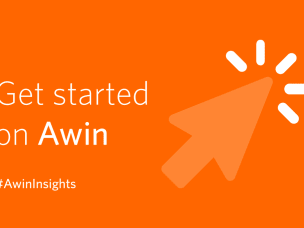How affiliate marketing can revitalize your business
Written by Samantha Sherer on 11 minute read
If your business is in a bit of a slump or not quite where you want it to be, you may be seeking ways to reenergize it.

One often overlooked method is to employ an affiliate marketing strategy. As a low-risk and high-reward method, affiliate marketing has the ability to revitalize your business. However, the first step is to understand how it works and then how to use it within your own business to achieve the desired results. This is particularly pertinent for newcomers to affiliate marketing, but even established brands can learn more and improve the success of their affiliate marketing strategies.
What is affiliate marketing?
At its core, affiliate marketing is referral marketing. You can choose to run an affiliate marketing campaign direct or through an affiliate marketing networking. Traditionally as a brand, you offer an affiliate program that publishers then promote on your behalf who then get paid an agreed amount for each sale made. It can be viewed as outsourcing your marketing, rather than employing an in-house marketing team.
It also comes under the umbrella of performance marketing, which means you only pay on results. The combination of these two factors ensures it is a low-risk method with the potential to reap a profitable reward.
How do businesses use affiliate marketing?
Businesses can use affiliate marketing in two ways:
- To drive sales to their own products and services. In this role, they are known as the advertiser.
- To supplement their income promoting related products owned by different businesses. Companies following this strategy are known as the publisher.
Businesses with a product to promote usually concentrate on the advertiser's role, and work with external publishers who promote the brands' products and are rewarded for every completed sale generated through an affiliate link.
In order to be successful, the business has to first set up an affiliate program. The affiliate program shares any offers that the advertiser provides for the publishers, and includes details of products and services, the commission levels, creatives that the publishers can use, and unique tracking codes embedded into the product links for each individual publisher to allow their sales to be tracked back to them. The affiliate program may be the first introduction the publisher has to the product and the brand, and the quality of the program will influence their decision on whether to become a publisher for that brand. It needs to be attractive and enticing if the advertiser wants experienced and competent publishers to promote their products.
A business can decide to either develop the affiliate program in-house or work with an affiliate network, like Awin. An affiliate network takes away the stress of running the program and finding quality publishers, as the network has a large pool of established publishers who have already joined the network. A good affiliate network, like Awin, will ask the publishers to go through an approval process and agree to compliance regulations. This ensures publishers are all carefully vetted for suitability and quality. If a business decides to run its own program it will need to undertake this process themselves, which can take time, effort and experience.
A network also provides a comprehensive tracking system, as well as invaluable support and guidance. This makes it the easiest method to follow for businesses just starting on their affiliate journey. Established affiliate businesses also favor networks as they are specialists at what they do and can negate the need for an in-house affiliate manager. The exposure they provide for affiliate programs is hard to achieve directly.
It is, of course, possible to go it alone and directly set up and promote an affiliate program but it does require a certain skill set plus access to the necessary technology for the tracking systems. This should include third-party tracking, attribution, advanced commissioning, and data-light tracking. It also takes time to set up. These factors can cost more than the fee an affiliate network charges for their services, but some businesses choose this path as they prefer to have complete control over their program, despite the major time and technological investment required with this strategy.
Affiliate marketing examples

Due to the FTC affiliate disclosure regulations, publishers who include links for which they receive commissions have to clearly note that this is a paid-for advertisement to their readers. This is to provide complete transparency to the audience so they make their decisions based on the full knowledge that the publisher is being paid to promote.
If the publisher has an established and engaged audience, this is generally accepted without issue and has minimal impact on the reliability that the audience applies to the content. This is because quality publishers only promote those products they fully believe in, otherwise they would be at risk of losing their audience’s trust, and without their audience they do not have a business model. Their audience receives a ton of free information and huge value from the publisher, and as such they are generally happy to accept affiliate recommendations from them.
There are now affiliate programs offered across a huge array of industries. Dig past the over-promoted niches like dietary supplements to find affiliate marketing examples across well-respected industries like telecommunications, travel, finance, insurance, technology, retail and much more.
Some well-known businesses offering affiliate programs include:
- Viator, A TripAdvisor Company – A leading global vacation tours and experiences website
- HP – Technology including computers, printers and more
- Under Armour - Sports brand
- SkinStore - Premium beauty products
- Etsy - A global marketplace for vintage and handmade items
These five examples are just a small snippet of the different types of affiliate marketing programs available, demonstrating the breadth of the possibilities on offer.
Some websites are fuelled entirely by affiliate links; a good example being the reputable PCMag. This website is aimed at the computer and technology audience and includes the latest news and product information.
Another great example of a website using affiliate marketing to fund itself while offering value to its readers is Urban Tastebud, which promotes subscription boxes and innovative food products, which are all affiliate programs.
With both of these publishers, they have built up a loyal audience based on great content and products. The readers buy through these links as they trust the promoting website.
Affiliate marketing in 2019
Like most marketing methods affiliate marketing has grown and developed, and the process followed today has changed since its inauguration. During 2019, certain trends have come to fruition that astute marketers have embraced.
Influencer marketing
Social media has played a large part in the rise of influencers. Often these influencers start by promoting their own channels, which then go viral. Influencers are individuals who have built an engaged and loyal audience and interact on a daily basis with them. The quantity of followers is important, but the quality of the followers is more essential, as a large audience that never interacts is difficult to build a rapport with.
Influencers looking to monetize their content often look to affiliate marketing, while advertisers seek influencers to help promote their product. Awin has made this process easier by actively reaching out to influencers to join the network and offering a unique payment scheme called Payment on Influence, providing the opportunity for an influencer to get paid on sales they have influenced and not just sales in which they received the last click prior to purchase (which is the model the affiliate channel is based on.)
The mobile market
Mobile viewing is still a buzzword, and in 2018, mobile sales made up roughly 40% of all retail ecommerce sales in the US. It’s thought that by 2021 mobile sales will account for more than half of all e-commerce sales.
Even though these figures have been steadily increasing over the last few years, some businesses still have not paid attention and are turning out websites not optimized for mobile. Affiliate marketing relies on its online audience so it’s crucial consumers have an easy experience and can click on the links to purchase on whatever browsing platform they are using.
Video and audio
As the bandwidth of the internet improves so does the use of video, with predictions estimating daily video viewing by 2020 at 84 minutes per user. Influencers use video extensively, incorporating affiliate marketing tactics like sharing coupon codes that can be used without a link, or adding affiliate tracking links to the video description, to help drive sales. Not forgetting as well that YouTube is the second largest search engine, affiliate marketers can not afford to ignore video.
Alongside video is the boom of audio online, boosted by numerous podcasts. Audio can be less intrusive than watching videos or reading text and can be listened to in moments of relaxation or on the train traveling home, and podcasts come with clickable links and show notes for further information.
As an affiliate marketer today, prioritizing these trends and checking all efforts match these considerations are likely to provide a leap forward ahead of other marketers.
Affiliate marketing for brands

As a business, brand affiliate marketing has many benefits, including:
1. Performance-based payment system
The most common affiliate marketing model is to pay a commission for sales, although some businesses pay for clicks or leads depending on what they want from the program. Paying for just completed sales comes under the heading of performance-based sales, which has little financial risk to the business. This also provides the business with upfront knowledge of how much they will be sending on their marketing, as well as seeing a high return on investment. On average, expect $7 for every $1 spent.
2. Ability to tap into a wider audience
Finding new traffic is one of the most important aspects of brand marketing. By tapping into a network of established publishers with unique, quality audiences, brands have the opportunity to expose their products to new consumers. This not only has the positive effect of growing the lead base and increasing sales, but it also helps build the brand. This helps to boost the brand’s reputation and instill confidence in the consumer via social proof (or recommendation) that the publishers bring to the table.
3. Work with an extended team of specialists
Employing a skilled internal workforce with different specialties is expensive. Affiliate marketing allows the brand to effectively outsource the process. By working with several different publishers, the brand has access to a new and extensive pool of talent without the high price tag. Partnerships and collaborations are a big aspect of affiliate marketing, and all stakeholders rely on each other for success. This symbiotic relationship maintains a healthy respect for each other, as both parties are equally important.
4. Tracking
Tracking is everything to marketers. Tracking and data allows marketers to study their systems and determine what is working well and what needs tweaking. It can also give invaluable insights into their audiences. Affiliate marketing, particularly if operating through a network, allows the brand access to extensive tracking and data. This then helps the brand to know which publishers are working well and which are less proactive, as well as what creatives are effective or whether changes are needed to improve conversion rate. These figures ensure brands can market as cost effectively as possible while using the marketing budget to its best advantage.
Time spent on marketing is time spent away from developing other aspects of your business, such as product development. Yet without brand exposure, your business will stagnate. If you are struggling to find a happy medium between developing and marketing, consider affiliate marketing.
Affiliate marketing provides a cost-effective and time-saving solution to boost your brand and revitalize your business. By exposing your brand to previously untapped audiences through publishers, you can not only extend the reach of your products but also develop a buzz around your brand. Nothing reenergizes a business more than people discussing your brand, sharing it and getting excited about what you have to offer. So, if you want more energy around your business and are looking for a way out of your marketing slump, look no further than affiliate marketing. You have nothing to lose except your current lack of marketing magic.



